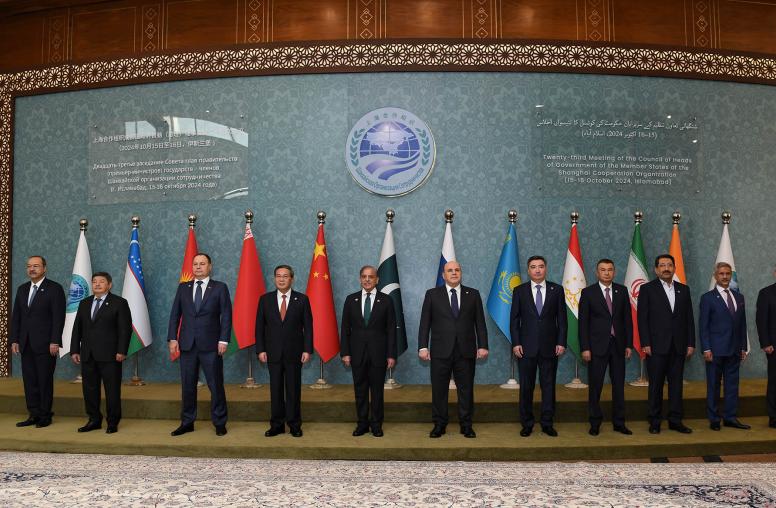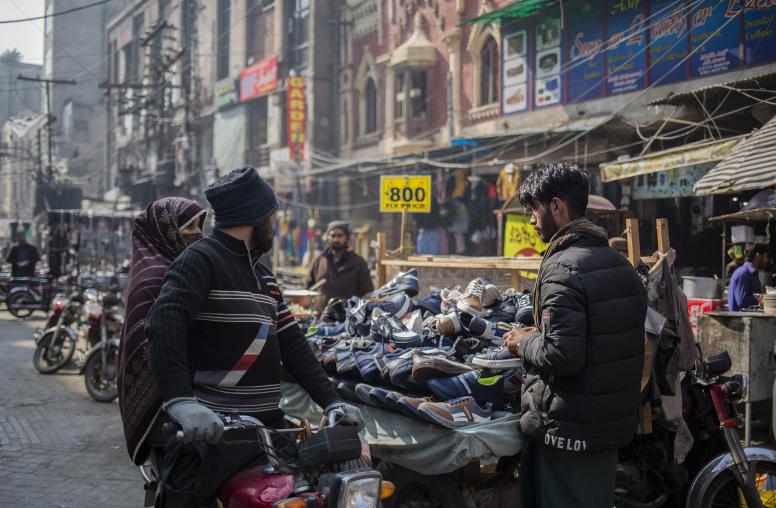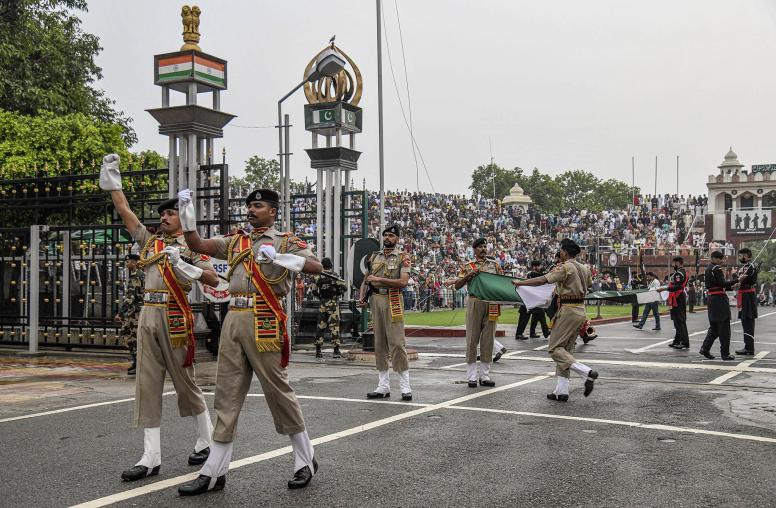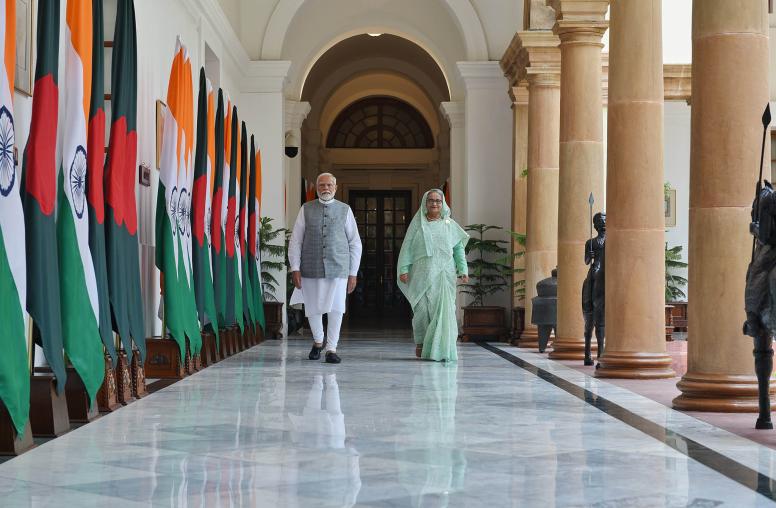Starting an Af-Pak Dialogue
Since early 2010, USIP’s Cross-Border Dialogue Initiative has brought together more than 300 people, teaching the skills of policy advocacy and negotiation and, at the same time, building bridges between communities suffering from endemic violence and separated by a tense national border.
April 6, 2011
They are mostly Pashtuns on both sides of the northern Afghan-Pakistani frontier, but their shared ethnic heritage has not prevented their neighboring homelands from emerging as a huge fount of insecurity—not only for both nations but for the wider world, too. Impoverishment and unemployment are severe, while governance remains weak. Radical Islamist-inspired terrorism by the Taliban and other groups and the military responses to it weigh heavily on life on each side of the border. In short, the famously mountainous terrain is home to too little hope and too many “angry, young men,” as Mary Hope Schwoebel, a senior program officer at the U.S. Institute of Peace, puts it.
Yet it is into these strategically vital areas that the Institute has launched a unique attempt at outreach, with the aim of helping to channel the frustrations and demands of marginalized people into productive, peaceful directions.
Since early 2010, USIP’s Cross-Border Dialogue Initiative has brought together more than 300 people, teaching the skills of policy advocacy and negotiation and, at the same time, building bridges between communities suffering from endemic violence and separated by a tense national border. In areas where people typically feel ignored by their governments and unable to improve their circumstances, the Initiative “has offered a means of peaceful access to power,” says Schwoebel, who is leading the project.
While this behind-the-scenes work does not garner the same headlines as terrorist attacks and military crackdowns, it lays some of the groundwork for a more stable, democratic and prosperous future.
The Initiative’s participants are drawn from both sides of the famed Durand Line, drawn in 1893 to separate the domains of the British colonial government of India from those of Afghanistan’s emir. It now serves as the border between Afghanistan and Pakistan. The group gathered by USIP hailed from the Afghan provinces of Nangahar, Kunar and Nooristan and in Pakistan from the Bajaur, Momand and Khyber agencies. They included mullahs, maliks (tribal leaders), business people, local government officials, civil society representatives, media and academics. USIP officers sifted through the lists of potential participants with an eye to create balance in terms of tribe and clan identity, area of origin, and religious and political affiliation. The Institute collaborated with two leading regional nongovernmental organizations, the Welfare Association for the Development of Afghanistan (WADAN) and the Pakistan-based Sustainable Peace and Development Organization (SPADO). After the USIP-led training, the Initiative moved into a series of small-group dialogue sessions, followed by two larger conferences, in January of this year in Kabul and in February in Islamabad.
The Initiative drew on important, earlier work by USIP to create networks of Afghan and Pakistani facilitators. Twelve of these facilitators from each side -- all trained in the ways of mediating tribal- and community-level conflicts -- were selected to help guide the discussions. Says Keith Bowen, the senior program officer in charge of the Network of Afghan Facilitators, “By organizing our effort this way—training, mentoring and coaching facilitators who are doing the work themselves—we’ve spread the dialogues into troubled areas where we cannot currently go. The facilitators will also be able to continue this work long after we leave.”
The U.S. Agency for International Development (USAID) funded the Initiative, turning to USIP in part because of the Institute’s mix of academic and practical, on-ground skills, as well as the flexibility it has to operate informally and without all of the same strictures that other U.S. government agencies would face in attempting the same work in politically fraught Pakistan and Afghanistan. “We have the power to convene a wide variety of people in a non-partisan way,” says Schwoebel. Her idea for the Initiative drew on her own previous work on cross-border dialogues in the Horn of Africa (involving Somalis, Ethiopians and Kenyans) 12 years ago, then as a consultant to USAID.
The discussions between Afghans and Pakistanis ultimately centered on the need for progress in three issues intimately affecting daily life in the tribal regions: education, employment and peacekeeping. The participants broadly agreed on the need for families to send their girls to schools and for schools to retain female teachers—sensitive issues in these religiously conservative areas. Indeed, some Taliban elements have targeted girls’ schools for terrorist attacks. On employment, Afghans and Pakistanis laid out ideas for agricultural development suitable for the rugged terrain, for creating job opportunities in gemstone mining and marble quarrying and for easing restrictions on cross-border trade to spur more economic activity. Both sides of the border suffer from dramatic joblessness that is a factor in attracting some to radicalism. Finally, those in the dialogues focused on the roles that religious leaders, tribal elders and the media can play in contributing to the prevention of violence in the region. They also want the United States to help their two governments to improve bilateral relations.
With encouragement from USIP, Afghan and Pakistani participants in the dialogues were paired up as roommates. At the end of each session, visitors received traditional gifts from their host-country counterparts, such as Afghan turbans or dresses or Pakistani walking sticks. Meetings ended with people from both countries reciting Pashtun poetry. The overall effect was to break down some of the reservations—and biases—that had hindered meaningful cross-border conversation in the past. For instance, some of the conservative Afghan mullahs, recalls Schwoebel, came to accept the presence of a young Pakistani woman working with a nongovernmental organization involved in the discussions. “They became kind of a family over the course of a year,” she says. “The transformation was palpable.”
The Initiative also provided an opportunity for people from the tribal regions to speak directly to senior representatives of their central governments—and with unaccustomed sophistication, as they used their new training to create power-point presentations, supported by statistics and video clips of interviews with local citizens, to recommend policy changes. Afghanistan’s deputy minister of education said the suggestions were feasible and that he would try to see that they are implemented. He added one idea of his own: conducting primary education in each area’s mother tongue.
Some international donor agencies also found the Initiative had broken new ground for them as they wrestle with the difficulties of working in volatile tribal regions. Japanese officials saw the recommendations as guides for how to invest development funds in Pakistan’s Federally Administered Tribal Areas, commonly known as FATA. Canadian officials also expressed interest in bringing Initiative participants into a process that they are managing to address border issues.
The project also seemed to dent negative impressions of the U.S. role in the region. “We thought Americans were only interested in war,” Haroon Shinwari, a Pakistani poet who joined in the Initiative process, wrote afterwards. “Now we know you are also interested in peace.”



